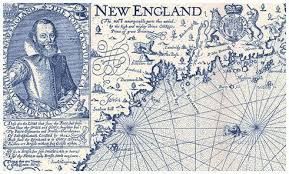
Price Ancestors:
Sir Roger Pedrick, Sr.
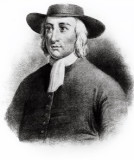
Roger Pedrick was born in 1615 in Somerset, England. He first came from England in 1652 with a deed from William Penn for 5000 acres of land given in payment for a debt. That ground today is known as Pedricktown, NJ.
He returned to England and married Lady Rebekah Holeman on July 20, 1669, in Middlesex, England, at Radcliffe Friends Meeting in England. They were both Quakers. and they had four children together. They immigrated in 1675 to Chester County, Pennsylvania, and bought land in New Jersey.
He died on March 14, 1692, in Salem, New Jersey, having lived a long life of 77 years.
Fisher Ancestors:
Almira Mann married the German immigrant George Lewis Fisher. Her ancestors were Irish and English who came to the New World in the 1600s.
Richard Mann
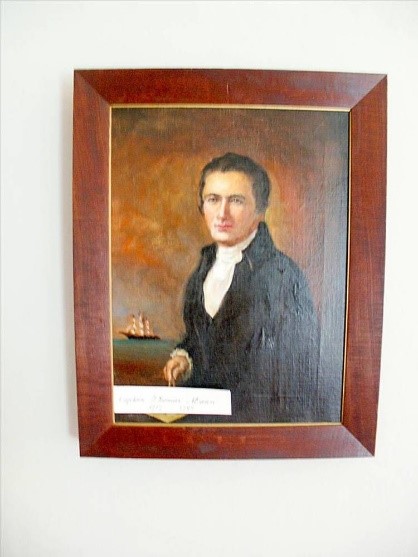
Richard Mann was born about 1609 in England and died in Feb 1654/55 in Scituate, Plymouth, MA about age 46.
Richard Mann, of Scituate was one of the first bearing the name who, probably with wife Rebecca during the reign of King Charles I of England, emigrated from that country no doubt a few years previous to 1644. The first appearance of his name on record is found with thirty-one other persons in the town of Scituate as having taken the “Oath of Fidelity.” This act dated 15 Jan 1644. Richard was a farmer, and one of the original land proprietors. His foresight, no doubt, led him to select one of the most beautiful locations for a residence on the coast. His neighbor on the south was John Hoar, who early removed to Concord, Mass. On the east of him was the sea; north “Musquascut Pond”; still further north and bordering the “Pond” were the “Farmes” so-called. In an attempt to cross this pond in Feb 1655 on the “iyce”, he was drowned. Like most of the earliest settlers, he has no monument to mark his grave. It appears he was a man of some note, and much respected in the Colony. Among his descendants may be found many in the various professions, trades, etc. A great proportion, however, have been and are farmers. His widow petitioned the court 5 Mar 16 55, to administer his estate. He was one of the Conihassett partners in Scituate, 1646. His farm was at Mann Hill. There is no record of his marriage here. His children born in Scituate were Nathaniel; Thomas; Richard; and Josiah.
RICHARD MANN’S INVENTORY:
“An Inventory of the houses lands and Chattles and goods of Richard Mann of Scituate ” was taken 14 April 1655, by James Cudworth and Walter Briggs, and was sworn to, before Timothy Hatherly, 6 May 1656. The real estate was: “one Dwelling house & barne with 43 Acars of upland 13 Acars of marshland and one share of Connahasett land, 2 oxen, 1 heifer, 2 steer s, 3 yearlings, 3 bu. barley, 36 bu. wheat, 1 pair shoes, 1 bu. malt, 1 bed, 2 old blankets, 1 rugg, 1 warming pan, 2 spinning wheels, 1 iron kittle, 1 iron pot, 1 iron skillet, 2 frying pans, 1 little kittle, 1 skillet, 1 pr. of tongues, 1 cradle, 2 old pitchforks, & pr. cards, a bible & other books, 1 plow, 2 ax, 2 hammers & how, 2 pieces bacon, small shot gun, 4 old chairs, & pr. of ballences, 1 Sabbath shorth coat. (All valued at about $75.). May 6, 1656, Rebecca Man, wife of Richard Man, decease d, doth give her 3 youngest children to each of them 5 pounds. Cap. Cudworth standeth bound to the same performed out of the estate of sd. Richard Man.” (Plymouth Colony Records)
“Capt: James Cudworth hath engaged to save the court from an Damage that may come to it by the adminnestration graunted to the wife of Richard Man Deceased.”
The Plymouth Colony records show that Richard Man was drowned early in 1656 and that his widow married John Cowin of Scituate.

The Mann Farmhouse and Historical Museum is a unique historical property in that its construction spans nearly three centuries. It is at 108 Greenfield Lane, Scituate, MA and open to the public. In the cellar may be seen the original foundation of field stones which dates back to the late 1600’s. The main house that now stands was built during the latter 1700’s on the original foundation. It is a typical full Cape with a large central chimney. The wing was added in 1825 and served as a summer kitchen, storage area and workshop.
Five generations of the Mann Family lived in this house. They were direct descendants of Richard Mann who came to Scituate in 1636. His home was near Musquashicut Pond, and it is from him that Mann Hill derived its name. Percy Mann, the seventh and last direct descendent of Richard Mann, lived in this house until 1968 and died at the age of 93.
The artifacts of the Mann Family on display in the Mann Farmhouse, date from the seventeenth century to the present time and were given to the Town of Scituate under the custody and administration of the Scituate Historical Society by two of the Mann Family heirs. They include primitive tools, military items, china, children’s toys, early farming equipment and many valuable documents and books. The Manns worked at many trades: they were farmers, sea captains, soldiers in every war; ministers, teachers, and sail makers.
The grounds of three and a half acres are also being restored by the Scituate Garden Club. The famous crocus bed which stretches under the trees behind the stone wall is visited every spring by hundreds of people from far and wide. [Pamphlet of the Scituate Historical Society]
Thomas Wheeler
Thomas Wheeler (c.1620, England – December 16, 1686, Concord, Massachusetts) was a colonial soldier of the Massachusetts Bay Colony. In 1675 he took part in King Philip’s War; later he wrote a narrative based on his experiences.
He emigrated from England to the North American colonies in 1642. In 1644, he was living in Fairfield, Connecticut. In the 1650s-Wheeler was a trader; in 1657 he purchased the right to trade with the Native American tribes for twenty-five pounds. Around 1661 he was one of the first people to purchase land in the Ockocangansett plantation, which later became the town of Middleborough, Massachusetts. He was made a lieutenant on October 12, 1669, and a captain in 1671.
In 1675 he took part in King Philip’s War against the Wampanoag and Nipmuck tribes. At the beginning of the hostilities, he was assigned as military escort to Cpt. Edward Hutchinson and together with him, led his men into an ambush, carried out by the Nipmucks under Muttawmp and Matoonas, at Brookfield, Massachusetts, that has become known as Wheeler’s Surprise. His horse was shot out from under him, and he was seriously wounded, but eventually survived the battle. His son, also named Thomas Wheeler was also wounded, in the loins and arm, but also managed to survive.
Thomas Wheeler (senior) eventually wrote an account of the engagement, which was first published in 1676 by Samuel Green, under the title “A Thankfulle Remembrence of Gods Mercy. To several Persons at Quabaug or BROOKFIELD”. Wheeler’s work exemplifies the Puritan conception of heroism, in which a person’s piety is their virtue while the credit for the victory in battle is ascribed to God.
He died in 1686 due to complications from the wounds received at the battle of Brookfield.
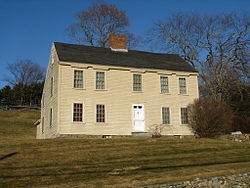
The Wheeler-Merriam House (or “Elm Brook Farm”) is an historic house at 477 Virginia Road in Concord, Massachusetts. The house was built in 1692 and was added to the National Register of Historic Places in 1982.
Earley – Price Ancestors
Obadiah Holmes
He was christened at Didsbury, Lancashire on Mar 18, 1609/10, the son of Robert Hulme Jr and Catherine (Johnson) Hulme. He married Catherine Hyde on 20 Nov 1630 at Manchester, Lancashire, England. His stone suggests a birth as early as 1606, and, In 1675, he wrote a letter, I Obediah Hullme … sixty nine years old or thereabouts (NEHGR 67:23).
Upon arriving in America he was admitted to membership in The Church of England in Salem, MA. On Mar 24, 1639, he established a glass foundry, the first in America to make window glass. However, he became a victim of religious persecution, was excommunicated from the church at Salem, and in 1646 moved his family from Salem to Rehoboth, MA. On Oct 2, 1650, Obadiah Holmes and others of Rehoboth, were indicted by the Grand Jury at New Plymouth for holding meetings in their homes on Sunday. This indictment prompted his move from MA to Newport, RI. There he became a colleague of Roger Williams, and the 2nd minister of the first Baptist Church in Newport, RI, taking the leadership of the church while Pastor John Clarke, M.D. was England.
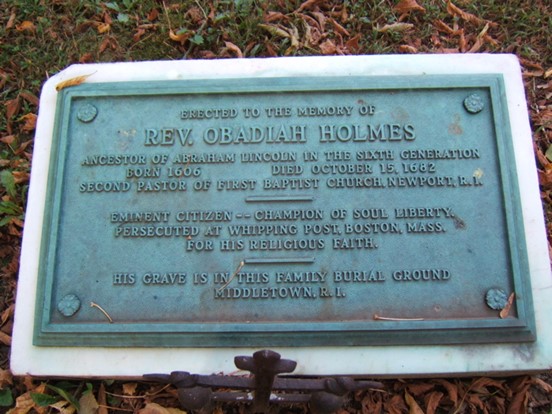
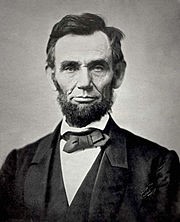
Abraham Lincoln was a prominent descendant of Obadiah Holmes.
William Salmon
William was born 1610 in Nazeing, Essex, England and immigrated to North America 21 May 1635 from England to St. Christopher, and soon after settled at a place known as Hashamomuck and Nashayonsuck that he bought from a Amahansuch Indian named Pauhamp, with his son Ambuscow, agreeing to it. Hashamomuck, Long Island is near Southhold, Suffolk, Long Island, New York. We find that William Salmon aged 25, left England 21 May 1635 in the Matahew of London. In the same book is listed the fact that Peter Salmon, age 20, sailed for St. Christopher 13 Oct 1635; he may have been a younger brother to William.
William was the member of a group from the Summer Isles (Bermuda) who went adventuring in 1636 to the Chowan (Indian) country (North Carolina) for spirits resin (turpentine). There they met Matthew Sinderland, a Mariner from Boston Massachusetts. Salmon and some of his associates threw in with Sinderland and returned with him to Long Island.
William Salmon acquired a home lot in Southold, Long Island where he plied his Blacksmith trade … Sinderland, who was married to Cathrine Curtice, … died intestate and childless about 1642 … William Salmon married the widow Kathrine soon thereafter, about 1643, and moved in with her at Hashamomuck, now part of Long Island, New York. He died 13 May 1657 in Southold, Long Island, New York.


Burial: Old Burying Ground of First Presbyterian Church Southold, Suffolk County, New York,